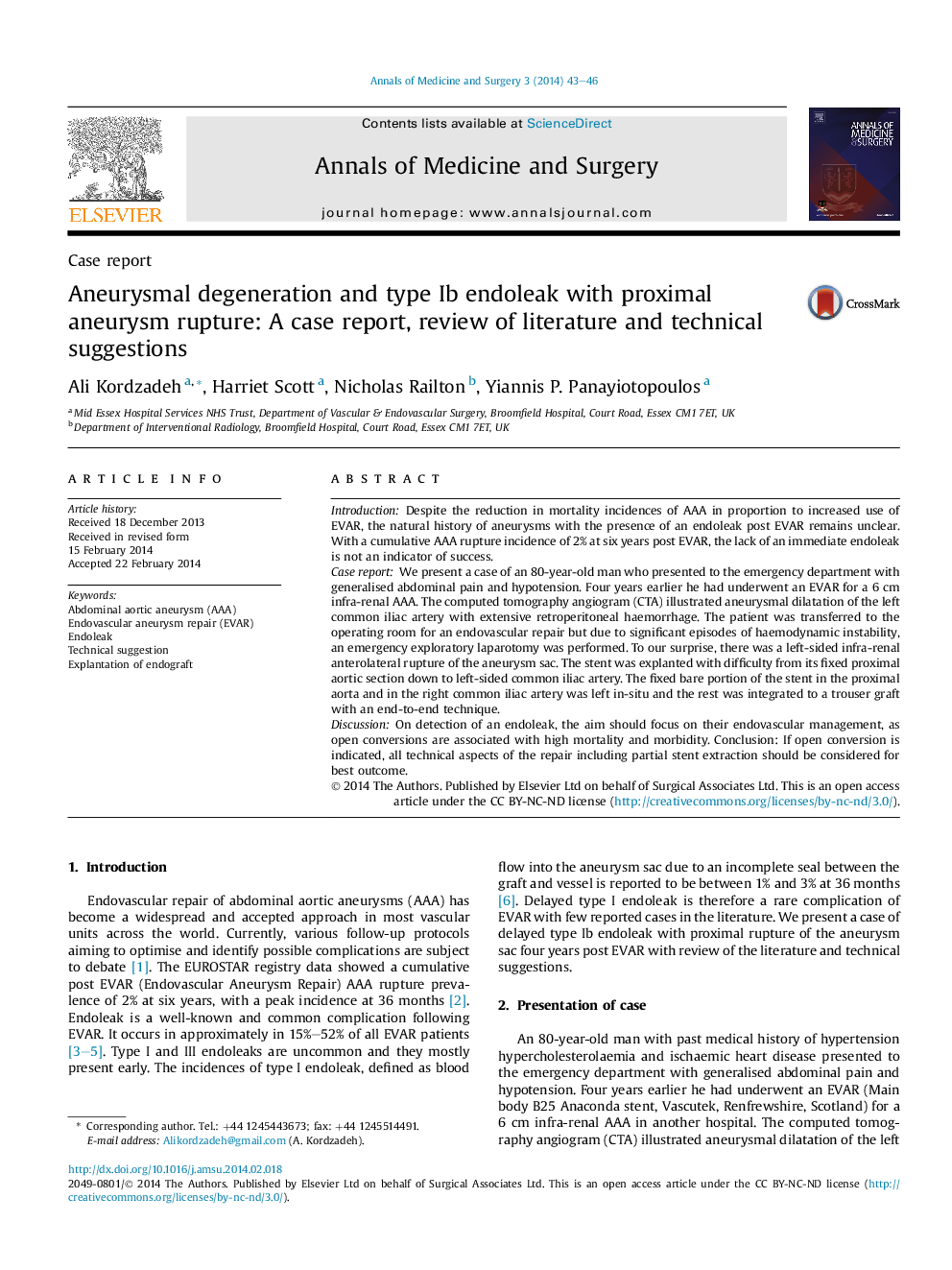| Article ID | Journal | Published Year | Pages | File Type |
|---|---|---|---|---|
| 4195556 | Annals of Medicine and Surgery | 2014 | 4 Pages |
IntroductionDespite the reduction in mortality incidences of AAA in proportion to increased use of EVAR, the natural history of aneurysms with the presence of an endoleak post EVAR remains unclear. With a cumulative AAA rupture incidence of 2% at six years post EVAR, the lack of an immediate endoleak is not an indicator of success.Case reportWe present a case of an 80-year-old man who presented to the emergency department with generalised abdominal pain and hypotension. Four years earlier he had underwent an EVAR for a 6 cm infra-renal AAA. The computed tomography angiogram (CTA) illustrated aneurysmal dilatation of the left common iliac artery with extensive retroperitoneal haemorrhage. The patient was transferred to the operating room for an endovascular repair but due to significant episodes of haemodynamic instability, an emergency exploratory laparotomy was performed. To our surprise, there was a left-sided infra-renal anterolateral rupture of the aneurysm sac. The stent was explanted with difficulty from its fixed proximal aortic section down to left-sided common iliac artery. The fixed bare portion of the stent in the proximal aorta and in the right common iliac artery was left in-situ and the rest was integrated to a trouser graft with an end-to-end technique.DiscussionOn detection of an endoleak, the aim should focus on their endovascular management, as open conversions are associated with high mortality and morbidity. Conclusion: If open conversion is indicated, all technical aspects of the repair including partial stent extraction should be considered for best outcome.
